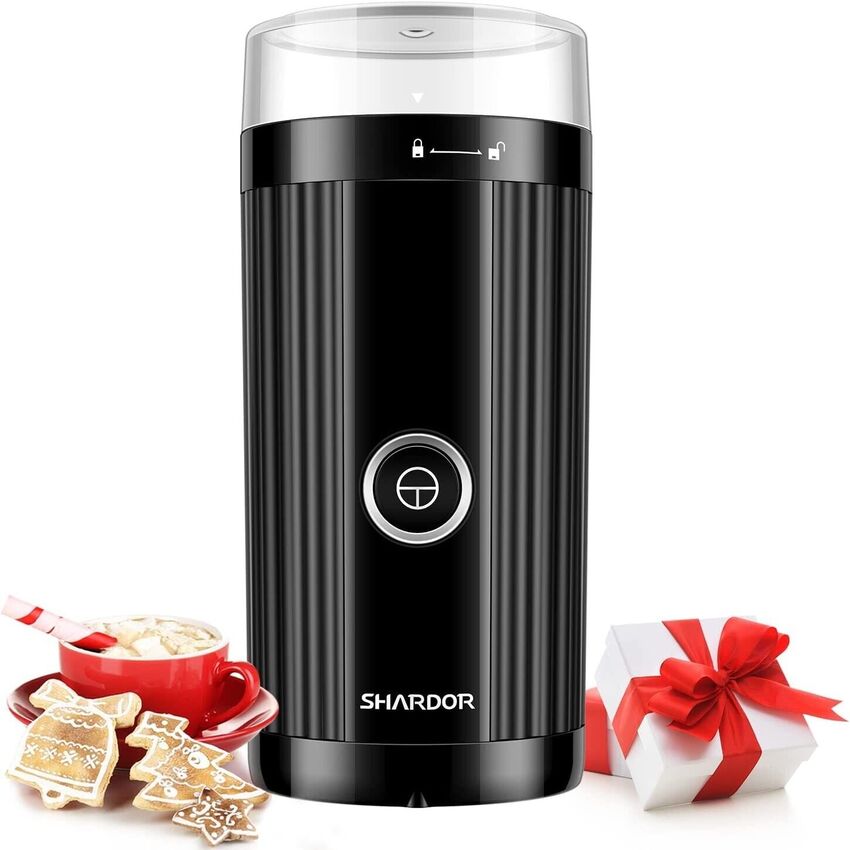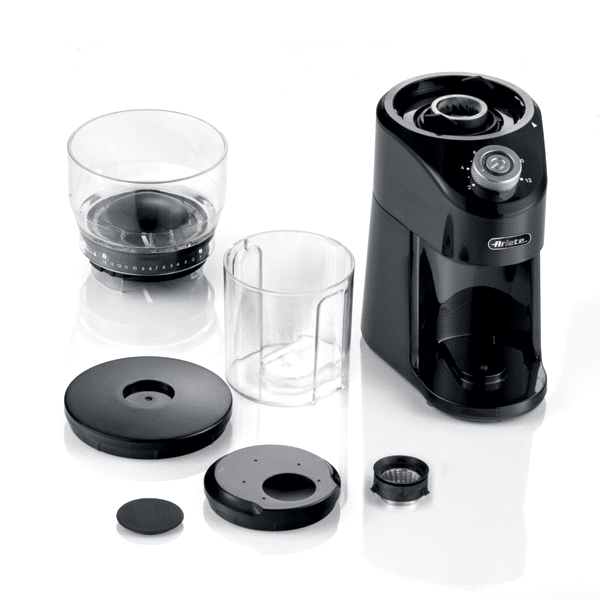Introduction to Coffee Grinding
The journey to a perfect cup of coffee begins long before the brew. It starts with grinding the beans. To make a rich and flavor-filled cup of coffee, understanding how to properly grind your coffee beans is essential. The grind affects many parts of the brewing process, including the time it takes for water to flow through the coffee and the surface area of the coffee that’s exposed to the water.
Two popular types of grinders dominate the market: blade grinders and burr grinders. Each type has its own method of grinding beans, leading to different taste experiences. This section of our guide delves into the basics of coffee grinding, setting the stage for a closer look at the burr vs blade coffee grinder that coffee enthusiasts frequently debate over.
Whether your preference leans towards a quick cup from an electric machine or a hand-crafted brew from a manual device, grinding your beans just right is key. Let’s explore grinder basics and gear up to understand their limitations and advantages, guiding you to select the perfect grinder for your coffee ritual.
Blade Grinders: Basics and Limitations
Blade grinders are common in kitchen stores. They feature spinning blades, like a blender, slicing coffee beans. These grinders are compact and affordable for most users. Yet, they have drawbacks you should know.
Blade grinders often produce uneven grinds. This leads to inconsistent flavor in your coffee. Since they chop beans rapidly, they can generate heat. This heat may harm the delicate flavors in coffee. For a uniform taste, consistency in grind size is vital. Unfortunately, achieving this with a blade grinder is tough.
Another concern is the noise blade grinders make. They can be quite loud during operation. Also, they may wear out faster than burr grinders. If you choose a blade grinder, use short pulses. This can help you get a more even grind and reduce heat build-up.
Despite these limitations, blade grinders remain a go-to for casual coffee drinkers. They suit those not yet ready to invest in a burr grinder. For first-timers, they offer a simple way to enjoy freshly ground coffee. Still, they may not provide the same quality as burr grinders.

Burr Grinders: Overview and Advantages
Burr grinders stand out in the coffee world, known for their superior performance. They surpass blade grinders in important ways. Let’s delve into what makes burr grinders the favored choice for coffee aficionados.
Burr grinders excel in consistency. They deliver uniform coffee grounds, which is key for great flavor. They achieve this by crushing beans between two burrs. This method limits heat, preserving the precious oils in coffee beans. These oils are what give coffee its rich taste and aroma.
The precision of a burr grinder also shines in its settings. You can finely adjust grind size, fitting any coffee making method. Whether it’s a fine espresso or a coarse French Press, burr grinders do it best. They ensure a balanced extraction, resulting in a smooth, delicious cup every time.
Now, burr grinders do cost more than blade ones. But for coffee lovers, the investment means better quality brews. With longevity and less maintenance, burr grinders prove to be a wise decision in the long run.
Types of Burr Grinders
There are two types of burr grinders: conical and flat. Conical burr grinders have a cone-shaped burr that fits into a larger, burred ring. They are less noisy and less likely to clog than flat burrs, making them popular for home use.
Flat burr grinders contain two flat, ring-shaped burrs facing each other. These provide a more consistent grind but can create more heat. They might not be as quiet as conical ones but are favored for achieving a precise grind. Whether for a busy coffee shop or a discerning home barista, flat burrs are excellent at fine-tuning the grind.
In the end, the choice between conical and flat burr grinders depends on personal preference, the type of coffee you enjoy, and the kind of brewing process you prefer.

Side-by-Side Comparison: Blade and Burr Grinders
When exploring burr vs blade coffee grinder options, a side-by-side comparison helps highlight key differences. By examining factors such as grind consistency, flavor impact, and heat generation, you can better decide which grinder suits your coffee journey.
Consistency of Grind
Consistency is critical for a good cup of coffee. Burr grinders offer uniform ground size, crucial for optimal flavor extraction. Blade grinders often produce uneven grounds, leading to taste inconsistencies in your brew.
Impact on Flavor
Flavor is king in the coffee world. Burr grinders crush beans evenly, releasing rich flavors and aromas. Blade grinders can miss this mark, at times chopping beans unevenly and diminishing taste quality.
Heat Generation and Bean Preservation
Heat affects coffee’s delicate flavors. Burr grinders are designed to limit heat during grinding, better preserving bean oils. Blade grinders, however, can generate excessive heat, potentially altering your coffee’s natural taste.

Selecting the Right Coffee Grinder for Your Needs
Choosing the right coffee grinder is a pivotal step for any coffee enthusiast. The type of grinder you select can have a profound impact on your coffee’s taste and your overall brewing experience. Here’s how to make the right choice for your needs.
Consider Your Coffee Brewing Method
Different brewing methods require different grind sizes. For French press, a coarse grind works best, while espresso requires a fine grind. Blade grinders can struggle to provide the precision needed for a uniform grind, which is essential for methods like espresso. Burr grinders, on the other hand, offer a range of settings that can accommodate every brewing method, making them a versatile choice.
Assess Your Budget
Your budget is also an important factor. Blade grinders are more affordable and a good starting point if you’re new to coffee grinding. If you have a bit more to spend, investing in a burr grinder will yield more consistent and flavorful results. Over time, the higher cost of a burr grinder can pay off thanks to its durability and the superior quality of coffee it produces.
Consider the Space in Your Kitchen
Space is a premium in many kitchens. Blade grinders tend to be smaller and can be an excellent space-saving solution. If you have more room, a larger burr grinder can be an excellent addition to your countertop, often serving as a statement piece for your coffee station.
Think About Convenience
Some prefer convenience over everything. Electric grinders, both burr vs blade coffee grinder, offer quick and effortless grinding at the push of a button. Manual burr grinders require more effort but can also be a satisfying part of the coffee-making ritual. They also tend to be quieter and more suitable for small or shared living spaces.
When making your choice, align your preferences with the traits of each grinder type. Your ideal grinder should match your coffee habits, your desire for consistency, and your budget. A thoughtful choice will enhance your coffee experience and bring out the best in your beans.

Maintenance and Durability of Coffee Grinders
Maintaining your coffee grinder can extend its life and ensure consistently good coffee. Both blade and burr grinders need regular care, but their maintenance varies slightly. Here is what you should consider for each type.
Blade Grinder Maintenance
Blade grinders are simpler and often involve fewer parts. To maintain them, you’ll need to:
- Clean the blades regularly to prevent old coffee buildup.
- Wipe the interior chamber after each use to remove oil and residue.
- Check the blades for dullness over time, as they may need replacement.
- Avoid grinding overly hard objects that can damage the blades.
These steps will keep your blade grinder in good shape and help it last longer.
Burr Grinder Maintenance
Burr grinders require more detailed care for peak performance. Here are key maintenance actions:
- Clean the burrs often to avoid clogs and ensure an even grind.
- Use a brush or blower to remove trapped coffee particles.
- Inspect the burrs for wear; they may need replacement after long use.
- Follow the manufacturer’s advice for deep cleaning and lubrication.
By staying on top of these tasks, you’ll maintain your burr grinder’s durability and enjoy its consistent results. Both grinder types promise longevity with proper care. However, burr grinders, with their more complex mechanisms, often showcase robust construction that can mean a lengthier lifespan. Choosing a high-quality grinder and maintaining it well can make a real difference in your coffee routine. Regular upkeep not only enhances flavor but also protects your investment for years of enjoyable brewing.

Conclusion: Making the Right Choice for Your Coffee Ritual
Choosing a coffee grinder is key in your coffee journey. Burr vs blade coffee grinder – each has benefits. Think about what matters to you in coffee making. Do you value flavor and consistency? Then, a burr grinder could be best. If budget is a concern, a blade grinder might be your start.
Consider your coffee brewing habits. Use a burr grinder for methods needing fine grinds like espresso. For coarser grinds, such as for a French press, blade grinders can work, but less evenly.
Also, think about the space and noise. A blade grinder saves space and is good for small areas. But, they can be loud. Burr grinders might take up more room but grind quietly and give better taste.
Don’t forget about upkeep. A blade grinder is simple to clean. Burr grinders need more care but last longer. Pick a grinder that fits your lifestyle and coffee preferences. This will make your coffee ritual something to look forward to each day.
